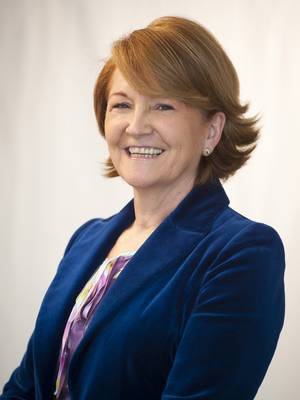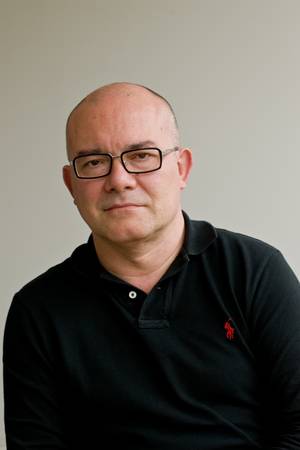Image of science and technology in the mirror of young people
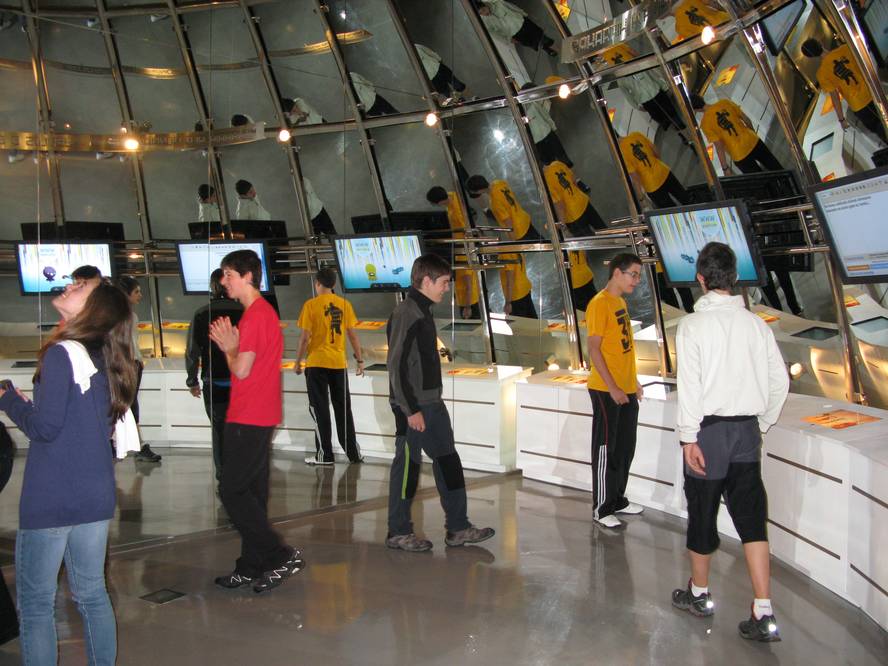
This study was carried out for the first time in the Basque Country and, together with the Elhuyar Foundation, the authors are the Department of Education of the Basque Government and the Chair of Scientific Culture EHU-BFA. They wanted to know the situation of the whole territory, going to almost a hundred schools of the Basque Autonomous Community, Navarre and Iparralde to carry out the questionnaire, as explained by Muguruza, “because schools are the easiest way to reach students.” A total of 2,061 students aged between 10 and 18 participated.
To explain the reasons that have led to the realization of the study, Muguruza has indicated the mission of Elhuyar: “One of our main objectives is the socialization of science and technology since childhood. So, for us it is necessary to know how society lives or sees that world.”
Muguruza has also given more reasons: “On the other hand, science and technology are very present and increasingly present in our day to day. Therefore, it is very important that society, and especially young people, develop a scientific culture. In addition, in Euskal Herria and in Europe there is a concern for vocations, since there are difficulties to obtain researchers necessary for European economic development”. He said they plan to carry out the study every four years to check if there are changes over time.
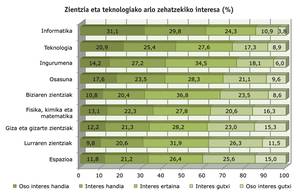
From leisure to school
Despite the results of the study, Muguruza highlighted the great interest shown by children and young people for science and technology: “Almost half of them respond that they have a lot or very high interest. Specifically, medicine and health, science and technology, the environment and ecology are in the third, fourth and fifth place of 11 topics chosen. And before there are only two themes, the first is sport and the second, cinema, art and culture. In addition, the sport has reappeared in the first place when they have been asked about vocations, especially among the youngest.”
On the other hand, within the themes of science and technology, young people have opted for computing, since almost two in three have a lot or a lot of interest in this field. Behind computer science are technology, the environment and health, and those who least interest them are space and earth sciences.
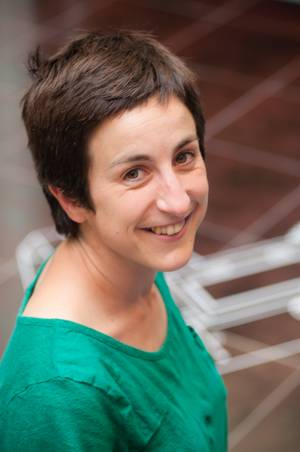
However, interest does not mean that they seek information on these issues. In fact, the study has shown that only a minority of young people turn to the media in search of content on science and technology, approximately one in ten.“The main source of youth information is the Internet and the media in general are more used than for leisure information,” Muguruza said.
Turning to questions about education, Muguruza says they are “satisfied” with the education they receive in centers on science and technology issues. In fact, the results of the study show that half (49.7%) consider that the training given in this field in the center is very good or good. “They think they are difficult subjects, but two out of three don’t seem to be a plate and say their activities in relation to these issues are fun.”
When choosing the favourite subjects, Muguruza considers “remarkable” the choice of mathematics by a large number of students. In fact, Mathematics appears in second place in the list of favorite subjects, and at the top of the list also appear Environmental Sciences (fourth) and Physics and Chemistry (sixth). Physical Education is the list head of children and young people.
In addition, the authors of the study wanted to know if these matters seem useful to young people. And the answer is yes, 85.3% do not agree with the following sentence: I do not like to study science and technology because they do not serve at all. Eight in ten believe that learning science and technology is worth learning for future studies, and seven in ten, for the work they want.
In the section of questions about education, asked about the teaching-learning methodology, students prefer subjects supported by new technologies (67.7%).
Image on science and technology
Another objective of the study was to know his image on science and technology and scientists. Thus, in view of the answers to the questions, it can be concluded that they have a positive image, “because they link it with the welfare of society,” according to Muguruza. In fact, seven out of ten students think that science and technology make our lives more comfortable and easy, help cure diseases, or science helps us to know the world better.
However, Muguruza stressed that children and young people are aware that the use of science and technology is not without risk: “For example, they say they believe they can pose a risk to health.”
In any case, the results report highlights the positive image of science and technology versus the negative: one in three of the respondents considers that the benefits of science and technology are above the losses and only 6.7% consider that the damage is greater. Yes, about 30% do not have a clear opinion.
Muguruza explains how young people represent scientists: “They are men, the elderly, wear white robe and work in the laboratory. However, it seems important to me that young people are not a stereotype of mad scientist, since although the image of the scientist is of an old hairy man, they have also said that they are ordinary people and, above those other characteristics, have said that they are creative and happy and that they work as a team and not individually.”
What do you want to be bigger?
They have also asked children and young people what profession they want to have in the future. And, according to the results, most young people have no intention of being scientific: eleven optional professions, their research work occupies the eighth place. The favourite professions are that of the athlete and that of the entrepreneur. “That is, young people think like adults,” said Muguruza. “They, both in Euskal Herria and in Europe, recognize the importance of researchers, but then they are not seen in that profession.”
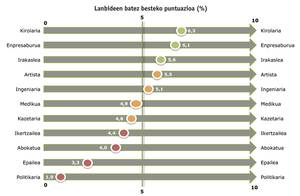
In any case, for Muguruza it is remarkable the good image that young people have of science and technology in general: they seem interesting, they are useful, they provide more benefits than damages, scientists are ordinary people... “We do not know what young people thought before, since for the first time in Euskal Herria we have carried out a study of this type, but we believe that the trend is changing, because we have heard many times that these topics are of plate and in this study have said the opposite”.
In the opinion of Muguruza, in this change of trend, they have probably influenced the initiatives that are made to bring science and technology closer to young people. “For example, in school centers more and more importance is given to experiments and group work, and there are also more activities outside the centers on these topics, such as scientific festivals, colonies of science... I think we are now seeing the fruits of those efforts.”
Social reflection
Begoña Ochoa is director of Scientific Policy of the Department of Education and for her it is especially interesting to see if there are changes in the perception of young people. “For this we will have to carry out these studies with a determined periodicity. But now, at least, we have a base and from now on we will have a tool to measure the impact of the actions we perform,” said Ochoa. “However, we have to take into account that the changes in society are very slow,” he warned.
In view of the results of the study, Ochoa considers that children and young people have been truthful. It seems normal to him that his main interest is sport and leisure, “but it has surprised me that there is so much interest in science,” he acknowledged. “However, given that they are children of their time, it is logical that they have a great interest in technology, since they have a great weight in their day to day.”
In addition, Ochoa thought they were going to have more interest in the environment. “The answers, however, I do not know to what extent they are aware of the importance of environmental issues. Maybe it has to do with the image given in the media, since many of the news that appear on these topics are usually negative: pollution, Garoña, problems... To change this we will have to work.”
Ochoa has valued especially the education in which children and young people think. “It seems wonderful to me and I would say it is the reflection of the effort we are making. In addition, the taste for new technologies in studies shows that we are on the right track.”
At the same time, Ochoa stressed that young people are “practical”, “that is why they find useful topics of science and technology, although they are not seen in the role of the researcher.” However, he believes this is normal because “young people find it difficult and abstract, especially compared to an athlete or an entrepreneur.”
Ochoa has indicated that there is still a differentiation between genres: “The girls continue to enjoy a world of more human science and technology, such as medicine and health, and the most technical boys. It is a photo of our society, which must also be worked.”
In general, the study seemed very useful and shares the opinion of the coordinator of the Chair of Scientific Culture of the UPV-DFB, Juan Ignacio Pérez Iglesias. According to him, “the first condition for an information to be useful is to have good information, and I think it is good, because I think they have said what they think, and proof of it is that almost everyone has said that sport is what they like most, especially the guys.”
In addition, Pérez Iglesias has discovered the things he expected and those he did not expect. “These surprises are the ones that interest me most, for example, children and young people have very clear that science is useful for their applications.” But he doesn’t like that, “because the older ones also think the same thing, and for those of us in science science is not that. For us science is the tool to understand and know the world.”
In this sense, Pérez Iglesias believes that perhaps there is the reason for the vocational descent in the field of science: “We do not come to understand that science is by itself interesting, not for possible future applications.” He thinks they have the same vision as adults, “and I think in that sense we would have to make an effort.”



